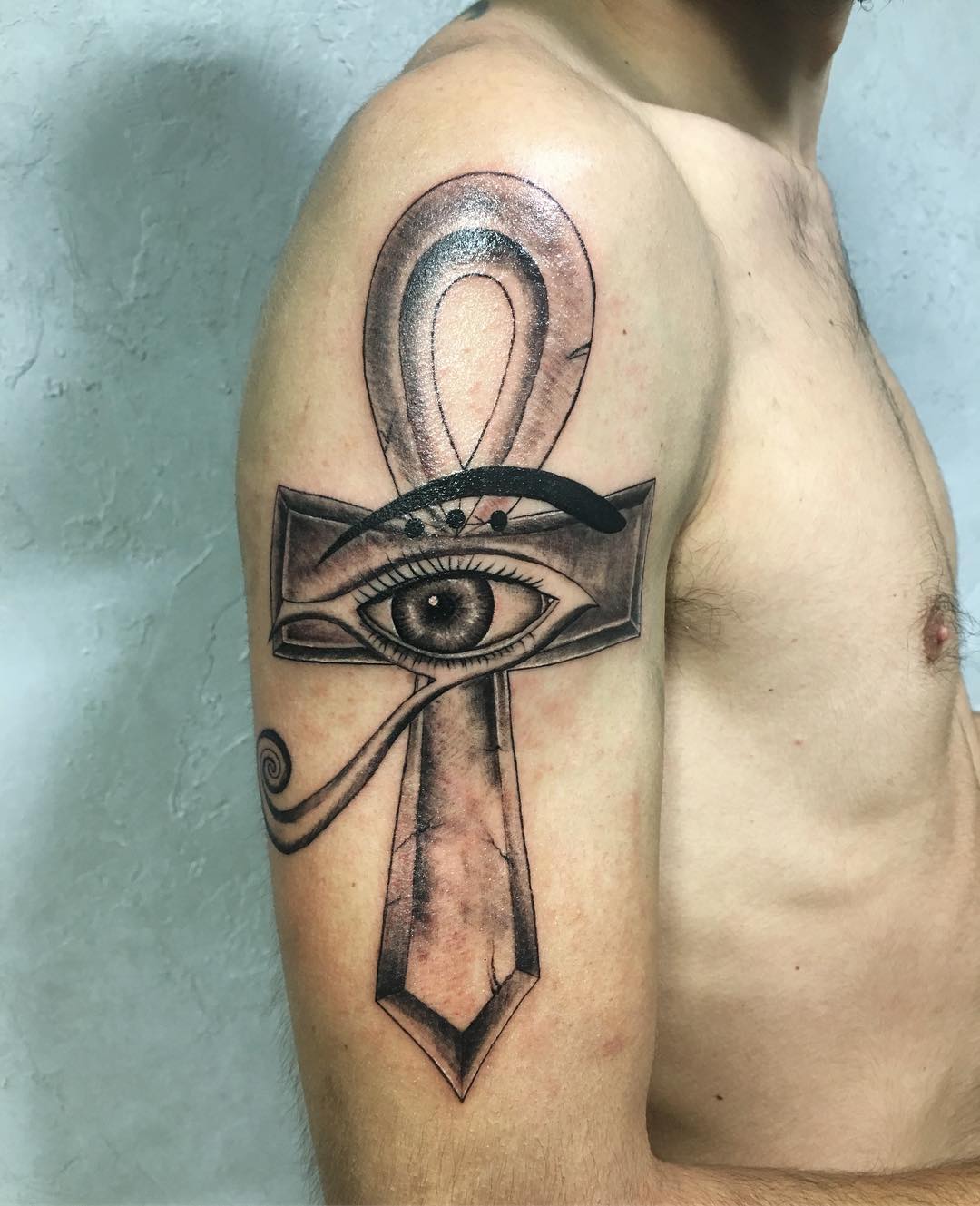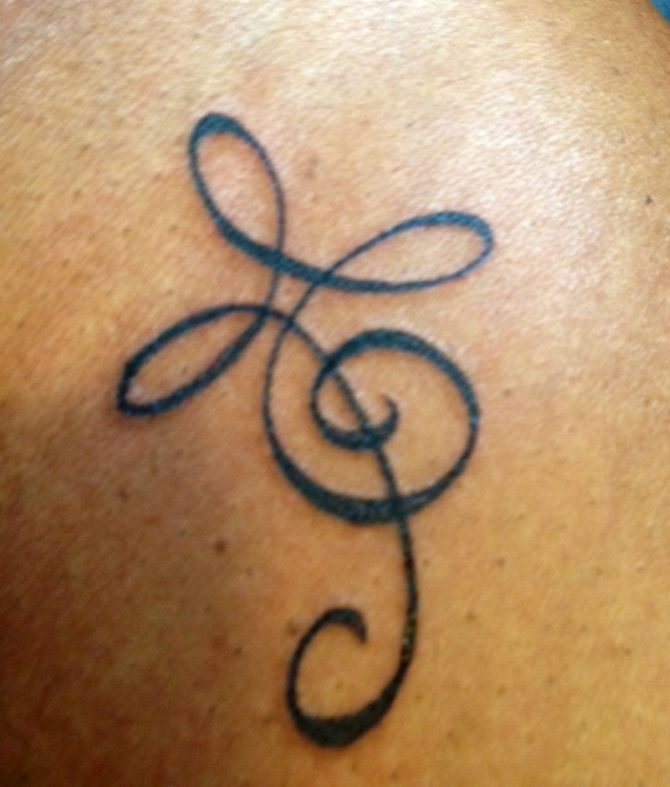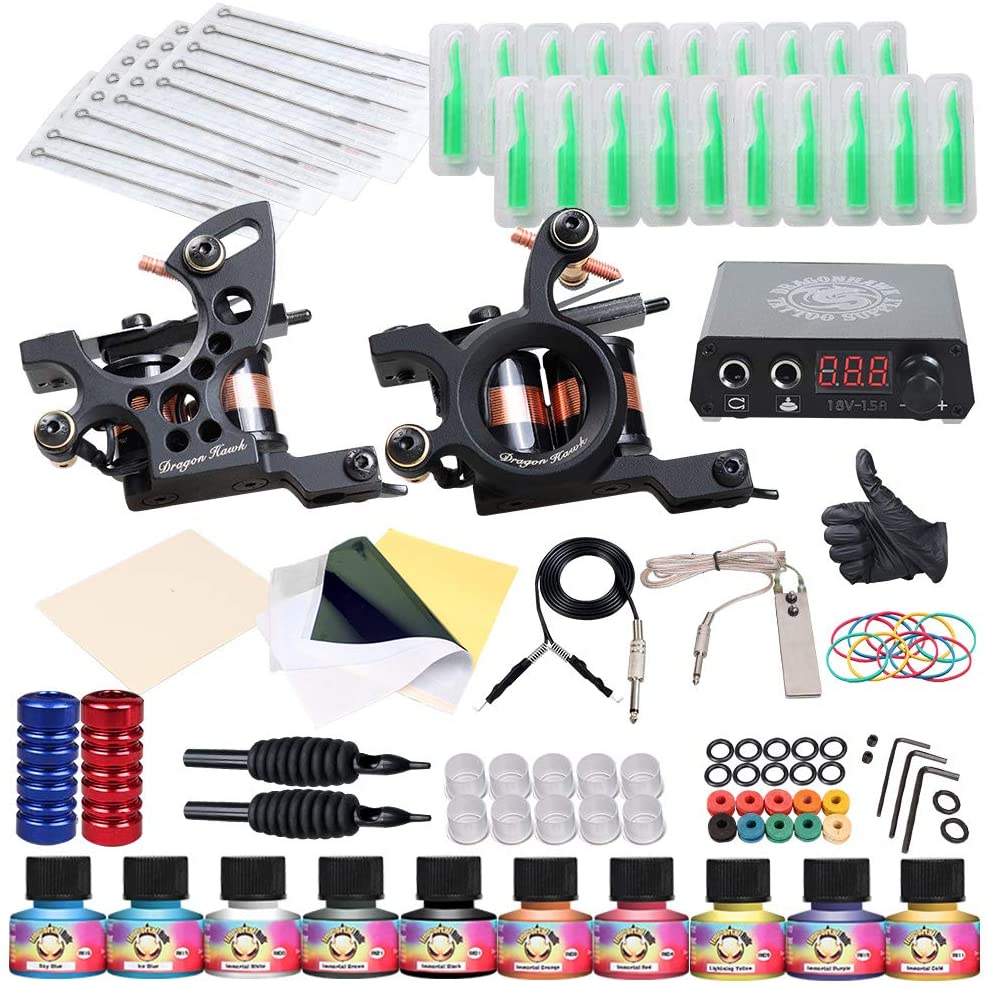
Egyptian tattoos have become highly sought-after in the world of body art. These designs, characterized by bold lines and rich symbolism, are a popular choice for people looking to get new tattoos. Recently, scientists made an incredible discovery of two mummies with ancient tattoos dating back thousands of years. Through infrared photography, they analyzed these mummies and found tattoo images of the god of fertility, Bes, and the Eye of Horus.
Anubis
Many people choose to get tattoos of Anubis as a way to honor and connect with this deity. Anubis is often depicted as a jackal or dog with human features, representing the merging of mythical and human characteristics. Another common interpretation is Anubis as the “Guardian of the Scales,” weighing the hearts of the deceased to determine their fate in the afterlife. Anubis tattoos can hold significant meaning for those with spiritual beliefs related to the afterlife or for those paying tribute to loved ones who have passed away. The design may symbolize spiritual protection, balance, or hope for a safe journey after death. There are various depictions of Anubis tattoos, with some featuring intricate details like snarling mouths or piercing eyes.
Cat
They were considered sacred animals, and killing a cat was against the law. Cats were often buried with their owners as a way to remember and honor them. Over time, more cats were domesticated, and these domesticated cats would often appear in art along with their kittens, symbolizing maternal instincts and fertility. Dogs and cats were commonly depicted as protective animals, as they helped keep humans safe from rodents and snakes that carried dangerous diseases. Cats were also associated with temples dedicated to the goddess Bastet, with pilgrims offering small bronze cat statuettes in hopes of receiving blessings and answers to their prayers. Tombs throughout Egypt were decorated with images of cats, particularly those belonging to queens and pharaohs.
Hieroglyphics
Ancient Egyptians used tattoos as a means of self-expression and to showcase their identity and spirituality. Hieroglyphics, representing deities and concepts from ancient Egyptian culture, are commonly used as tattoo motifs. Egyptian symbols vary in complexity, with some being easy to incorporate into various designs. Popular Egyptian symbols for tattoos include the ankh, which represents life and hope, and the Eye of Horus, a symbol associated with the mythological struggle between Horus and Set. The Sphinx, a mythical creature with human and lion features, is another popular Egyptian tattoo design. Egyptian crosses, symbolizing fertility, the sun, and the Nile River, are also beloved tattoo choices. The placement of these tattoos can be versatile, with popular spots being the chest, back, neck, or anywhere that feels natural.
Bastet
Bastet, a powerful Egyptian deity associated with war and protection, is often depicted with the head of a cat. She was revered by women for providing protection against danger and disease. Bastet statues can be found in various poses, sometimes holding ceremonial sistrums and featuring cat head ornamentation. To honor Bastet, one can create a special protection ointment or make offerings in the form of a necklace or pendant. Establishing a sacred space as an altar for Bastet in one’s home allows for a deeper spiritual connection. Understanding Bastet’s story and history is crucial in developing a personal relationship with this goddess and honoring her in daily life.

